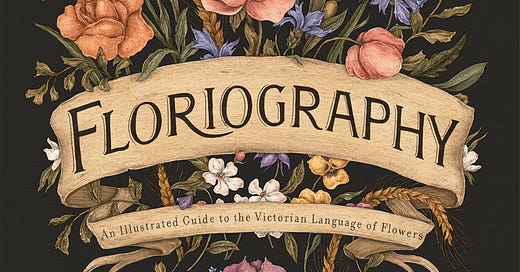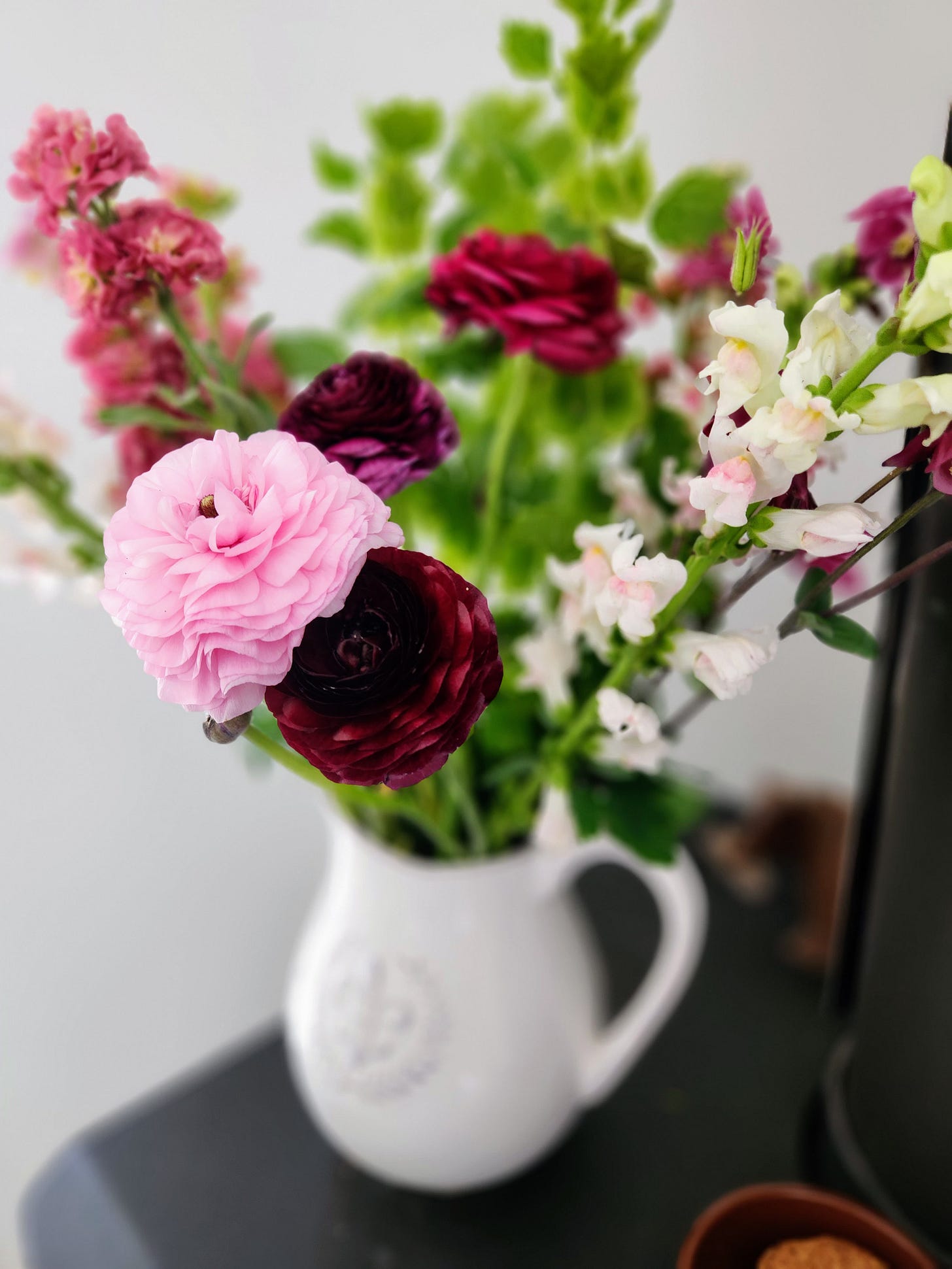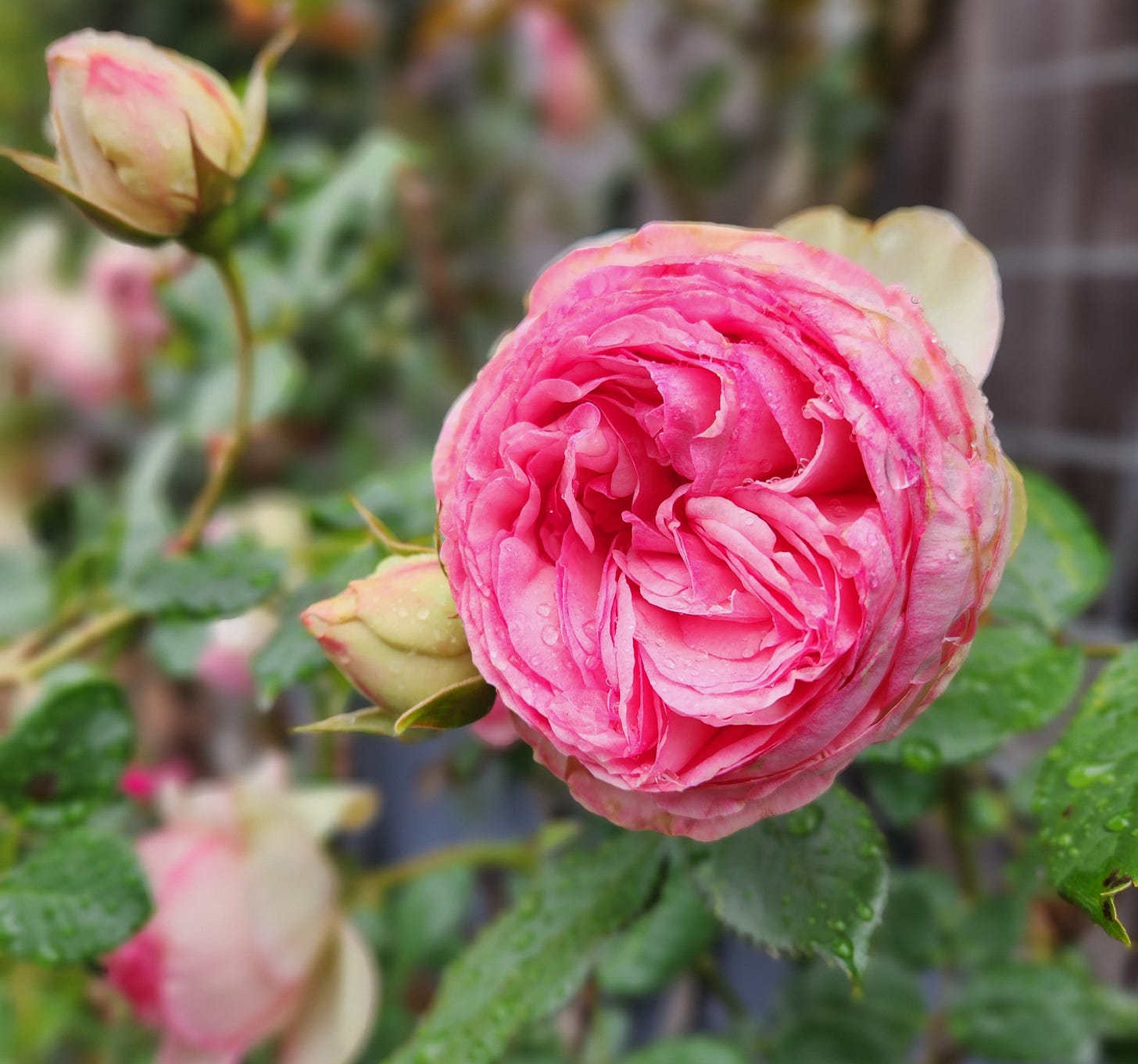The days are getting hotter and I can feel the warmth of Summer begin to seep through the cracks in the capricious weather. In the garden, my trusty Pierre de Ronsard roses and bearded irises are bursting with luscious, blousy blooms as is the clematis, which is rambling over a viciously thorny New Dawn rose. I bought myself a lovely posy of spring flowers from The Flowering Field at the gorgeous antiques establishment Dirty Jane’s and a bouquet of natives to celebrate some exciting news, which I will announce next month. I’m sure Poppa, our ‘house elf’ (aka Nisse or Tomte in Scandinavia, Domovoy in Slavic countries, Brownie in Great Britain), quite enjoys a bit of seasonal decoration. He continues to smile wholeheartedly as you can see in the photo. I’ve also, finally, planted some herbs, veggies and flowers in the corrugated iron planter that has sat empty for the last couple of years. I’m looking forward to watching it grow and ripen through the Summer (fingers crossed that my seeds will actually sprout).
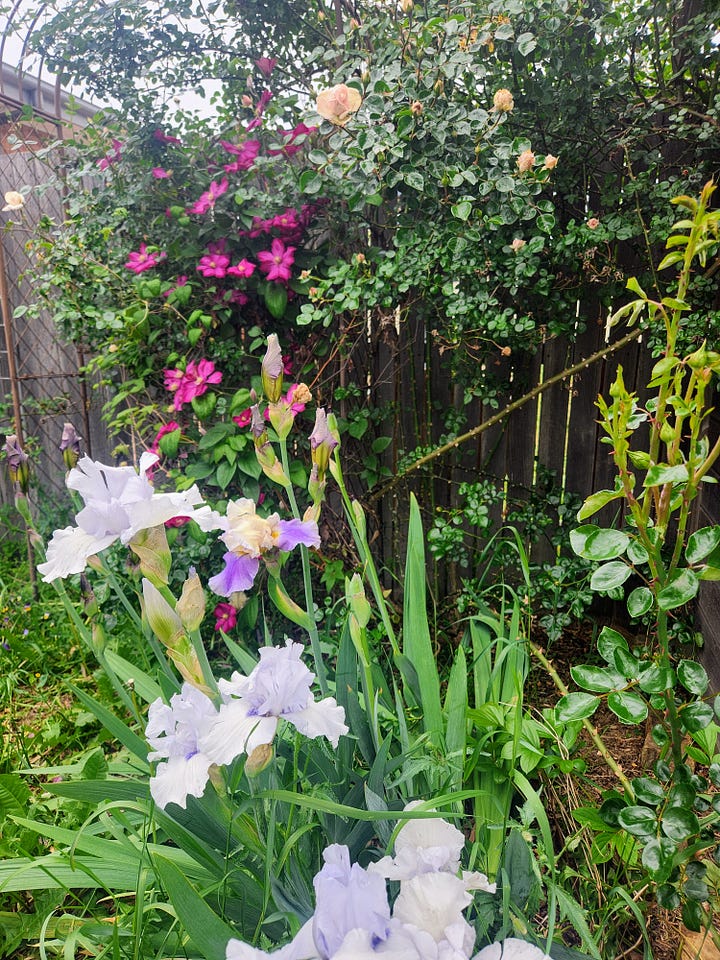
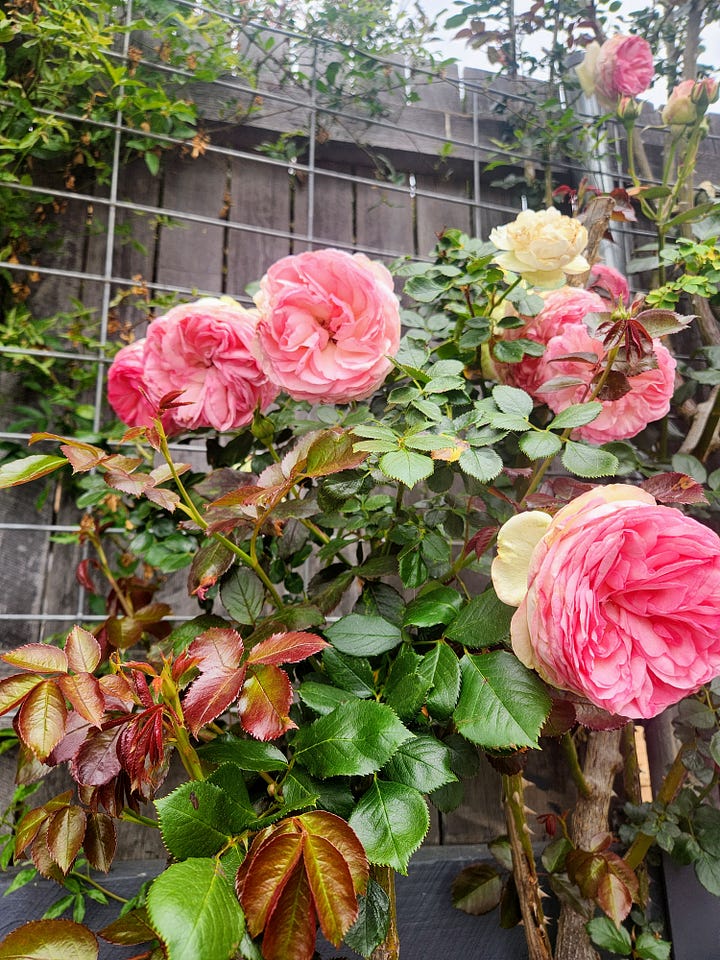
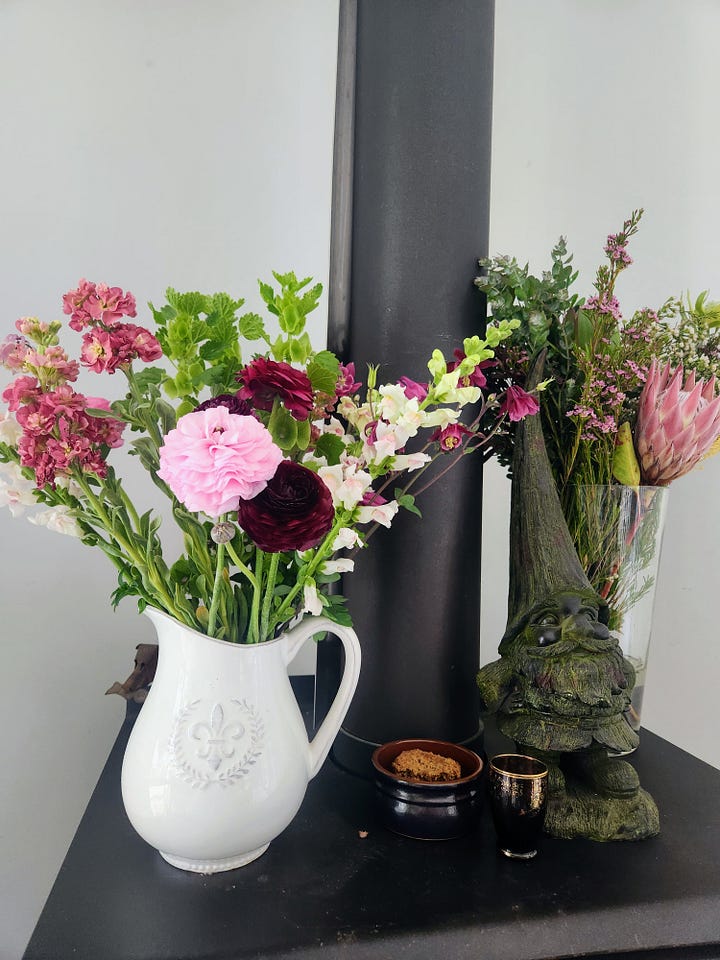

I’ll be taking a break from posting articles for the next couple of weeks while I work on a few projects but I will be back at the start of December, in time to share some of the magic of Christmas, including the fascinating history of Santa and his (not so nice) elves, the joys of Christmas in the Southern Hemisphere, and New Year’s Eve traditions. Take a look at the Schedule for more information on upcoming articles and for links to all previous articles. In the meantime, I thought I would introduce you to a lovely little book that feels rather appropriate for the season, Floriography: An Illustrated Guide to the Victorian Language of Flowers by Jessica Roux. Enjoy!

Floriography: An Illustrated Guide to the Victorian Language of Flowers is a beautifully illustrated book by Jessica Roux, which explores the secret meanings associated with various plants during the Victorian era and how they were used to discreetly communicate messages and sentiments. Jessica’s illustrations are divine. Take a look at the gorgeous work on her website www.jessica-roux.com.
In Jessica’s own words…
The Victorian language of flowers - also called floriography - emerged as a clandestine method of communication at a time when proper etiquette discouraged open and flagrant displays of emotion. First emerging in 1819 with Charlotte de la Tour’s Le langage de fleurs, this coded “language” was used widely throughout the nineteenth century in both England and America and today is synonymous with Victorian tradition and culture. Flower meanings were taken from literature, mythology, religion, medieval legend, and even the shapes of the blooms themselves. Often, florists would invent symbolism to accompany new additions to their inventory, and occasionally, flowers had different meanings depending on the location and time. Young women of high society in this era embraced the practice, sending bouquets as tokens of love or warning, wearing flowers in their hair or tucked into their gowns, and celebrating all things floral. Many of them created small arrangements of flowers, called tussie-mussies or nosegays, by combining a few blooms in a small bouquet. Worn or carried as accessories, these coded messages of affection, desire, or sorrow allowed Victorians to show their true feelings in an enigmatic and alluring display.
For fun, let’s take a closer look at two of the flowers that were part of my Spring posy, the snapdragon and the ranunculus.
Snapdragons
According to the Victorians, Snapdragons (Antirrhinum) meant ‘Presumption’:
Snapdragon’s link to presumption may derive from a medieval fashion practice: maidens would wear snapdragons in their hair to show they were not interested in unsolicited attention from men. The flower warned young men against presumption in a subtle and elegant way. Floriography by Jessica Roux
If paired with Asphodel it symbolised an apology for a lack of discretion while paired with Holly it indicated that the indiscretion would not happen again.
Ranunculus
Sadly, Ranunculus wasn’t included in Jessica’s Floriography book (because one can’t possibly include every one of the overwhelming numbers of flowers) but a web search easily finds its meaning…
Charm – The beautiful Ranunculus flower represents charm in all of its forms. This gentle flower is a perfect way to say to someone that he or she is charming and that you are mesmerized by it. Ranunculus flowers are perfect gifts for those who have caught your attention and made you blush a little. They are ideal gifts for females, since they resemble roses and perfectly represented femininity and gentleness of a woman.
Attractiveness – The Ranunculus flower also represents attractiveness. There is no better way to tell someone you feel attracted to him or her, than by gifting this gorgeous flower. Ranunculus flowers have been symbols of attractiveness and beauty for centuries and women loved being compared to this beautiful flower. It is simply beautiful and so simple, that it captures our attention without even trying.
Crush on someone – Ranunculus flower doesn’t represent deep emotions or longings, but it can be a great way to say to someone you feel attracted to their charm or beauty. A bouquet made out of Ranunculus flowers is a perfect way to tell someone you are attracted to them and you want to find out more about them. Just choose the right Ranunculus flower color and make the first step. Flowermeanings.org
However, there are lovely entries in Floriography for Rose and for Iris, two flowers that are blossoming profusely in my garden at the moment.
Rose
Unsurprisingly, Rose (Rosa) means ‘love’ and also happens to be my wonderful mother’s name.
The rose flower has been closely linked to love in many cultures throughout history. Its lushly layered petals and sweet aroma may explain why. For the Victorians, the colour of the rose indicated the level of affection: a white rose was for innocent love; a blush pink rose was for a blossoming romance; and a deep red rose for passion. In Greek myth, Chloris, the goddess of flowers, is said to have turned a beautiful, dead nymph into a rose. She invited Apollo to warm the bloom, Aphrodite to lend it her beauty, Dionysus to add sweet nectar, and the three Graces to supply charm, joy, and magnificence. Chloris called the rose the “Queen of Flowers”. Floriography by Jessica Roux
Iris
The Iris symbolised ‘Valour’, ‘Wisdom’ and ‘Faith’.
The iris has long been associated with power and victory; the ancient Egyptians used the iris to crown the brow of the Sphinx. Years later, Clovis I, the fifth-century king of the Franks, won a significant battle after seeing irises blooming in a river. His soldiers adorned themselves with the flowers afterward, and the iris’s three upper petals were then said to represent the valor, wisdom, and faith that led to their success in battle. Floriography by Jessica Roux

For more gorgeous photos and a few peeks inside her book, take a look at Jessica’s Floriography webpage.
See you in December for the next instalment of Wheel & Cross. In the meantime, ‘stop to smell the roses’ and remember, “Happiness held is the seed; Happiness shared is the flower” John Harrigan.


